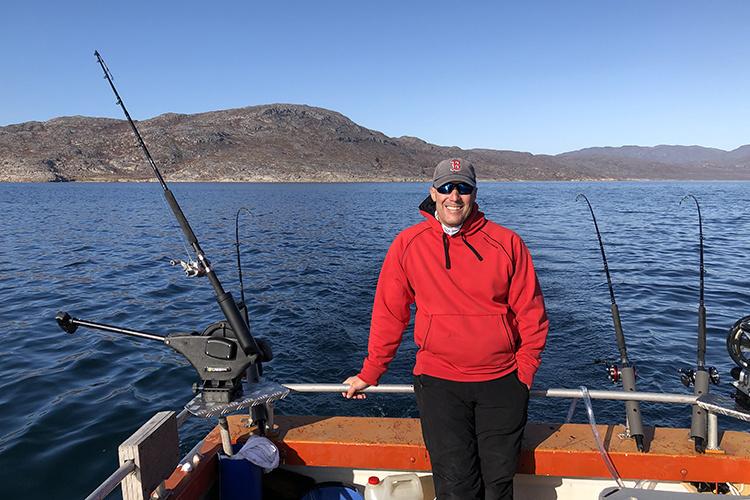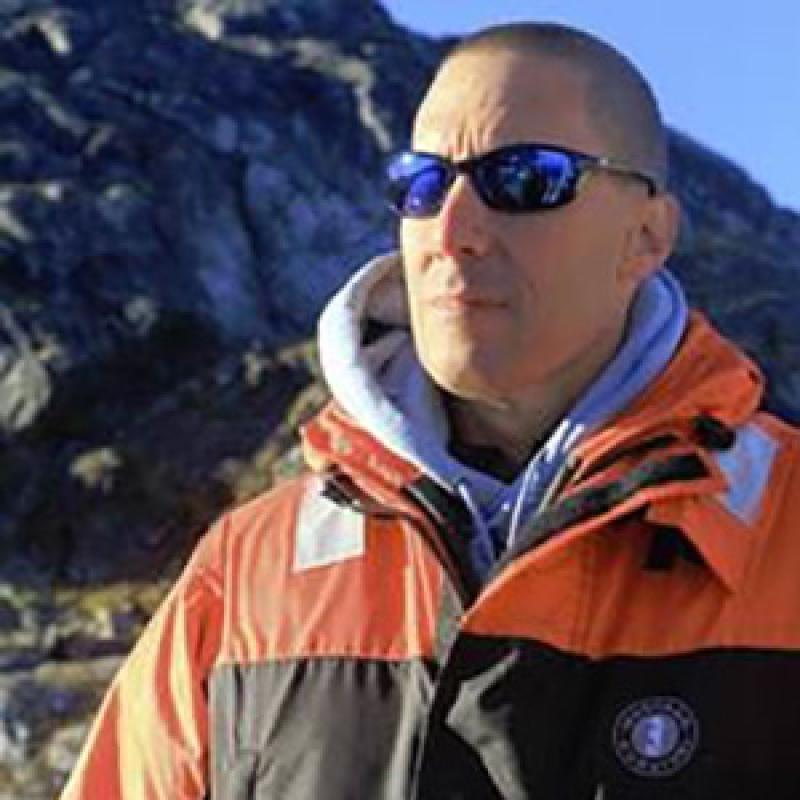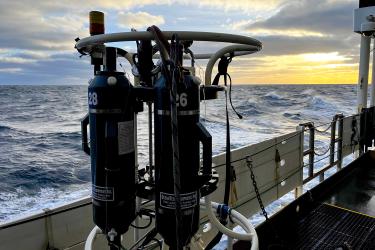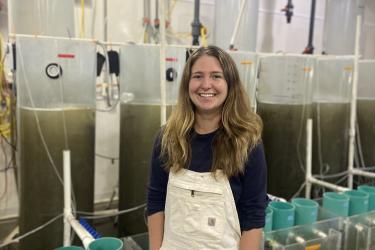Scientist’s Log: Day 3
Wednesday, October 2, 2019
Today was blowing a gale and we weren’t able to get out on the water. Hoping to get out tomorrow!
Scientist’s Log: Day 4
Thursday, October 3, 2019
The winds have finally settled down. It felt nice and familiar to be out on the water again with Johannes — one of the fishermen my collaborators and I work with. We were on the M/S Vange II. It’s very similar in design, shape, and size as the original, M/S Vange, it’s just a newer version with a more stable hull and a newer engine — all good things.
Trolling started off great! We got the gear in the water shortly after leaving the harbor and soon caught two medium-sized codfish, but no salmon. Unfortunately, the winds kicked up in the eastern part of the Qaqortoq fjord and we had to move to a calmer section of the fjord. Then over the next two hours, the winds moved up along both sides of the fjord, chasing us off of the water. After looking at weather maps, there’s been a larger low pressure system moving eastward just south of Greenland, which I believe has been the cause for these uncharacteristically windy conditions lately. The system should move on over the next few days and we’re hoping for ‘fair winds and following seas’ soon!

Scientist’s Log: Day 6
Saturday, October 5, 2019
I was able to get out today for a good stretch of trolling. Unfortunately, the salmon were not cooperating. The day started out great — got all the gear in the water and caught our first salmon of the trip. I worked up, sampled, tagged, and released it successfully. About 10 minutes after the first salmon, we had another nice one, but it released itself before we could get it into the boat. After that, nothing. We looked at the boat's fish finder and saw fish we assumed were salmon, but nothing was taking our lures. Shortly after noon, the winds picked up again and we called it a day. We’ll try again tomorrow. We’re also working to enlist another boat to double our fishing effort sometime within the next few days. We hope that more lines in the water will result in more fish in the boat!

Scientist’s Log: Day 7
Sunday, October 6, 2019
Tough going - Eight hours fished and zero salmon hooked! Calm sea with fog all morning and sun all afternoon.
Scientists have a “big picture” understanding of where Atlantic salmon go – from rivers to the Labrador Sea to Greenland and back – but don’t know the details. Special satellite tags will help get at those details. Each tag is programmed to record data on salmon movement and migration behaviors as well as environmental conditions as the fish swims in the waters around Greenland and on its journey back to natal rivers for spawning.



